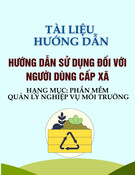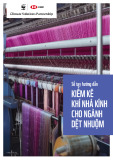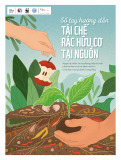
Hue University Journal of Science: Economics and Development
pISSN 2588-1205;eISSN 2615-9716
Vol. 133, No. 5C, 2024, pp. 67–82, DOI: 10.26459/hueunijed.v133i5C.6994
TRADITIONAL FOOD PRODUCTS AND
THEIR PROMOTION STRATEGY IN VIETNAM
Hoang Thanh Long*, Pham Xuan Hung, Nguyen Thi Thuy Hang,
Duong Thi Tuyen, Nguyen Huu Linh
University of Economics, Hue University, 99 Ho Dac Di St., Hue, Vietnam
* Correspondence to Hoang Thanh Long <hoangthanhlong@hce.edu.vn>
(Submitted: November 9, 2022; Accepted: September 27, 2024)
Abstract. Traditional product development and their interest have been increasing among stakeholders
recently. This research applies mixed methods of comprehensive literature review and secondary data
collection related to the Vietnamese traditional food products (TFPs) production and a national promotion
strategy for these products, namely the One Commune One Product program (OCOP). The results show
that Vietnam has lots of traditional products, including foods, drinks, fermented products, … of which foods
dominate the most proportion. In this study, TFPs in Vietnam are categorized into groups of traditional
fermented products of alcoholic beverages, fish products, meat, soybean products, and vegetables.
Additionally, the OCOP program has attained significant results of developing the TFPs, increasing income,
and improving livelihoods for farmers.
Keywords: traditional food products, promotion strategy, OCOP, Vietnam
1 Introduction
Despites of the globally increased of the food market, the attention in TFPs are increasing among
customers, producers and policy marker in both developed and developing countries [1–4]. TAPs
have been highly appreciated for their positive benefits of locally unique, environmentally
friendly and healthy. As a result, TAPs contribute an important component of cultures, history,
and lifestyles devoting to the development and sustainability of rural regions [5].
The special geographical position has brought Vietnam a humid tropical climate, monsoon
and very diverse natural conditions, differentiated between regions across the country. Vietnam
is a country with a long-standing agricultural civilization, with a basic community-based
organization, thus Vietnamese agriculture, forestry, fisheries and craft villages are especially rich
[6–9]. Stemming from the above characteristics, Vietnam has been considered to occupy is a very
diverse and rich system of products, each locality throughout Vietnam has its own typical
products of the countryside. Vietnamese people normally name their local products and
specialties after the name of their locality as both a special feature to indicate the origin of the
product, and to show pride of their countryside. Agricultural and livestock products of Vietnam
are very diverse such as food, animals, plants, flowers, fruits, medicinal plants, industrial plants

Hoang Thanh Long et al.
Vol. 133, No. 5C, 2024
68
[10]. Among these traditional products, TFPs occupied the majority proportion of nearly 80% and
contributing important part for increasing income, improving livelihoods for farmers in the
countryside of Vietnam [8–11].
Despite the great potential and opportunities for development, it is surprising that there
have been still very little studies focused on categorizing Vietnamese traditional food products
and evaluating the national promotion strategies for these products. Therefore, this study aims
to systematize groups of traditional food products in Vietnam and initially assess the promotion
strategy for TFPs through the national strategic program of One Commune One Product (OCOP)
after 3 years of implemented from 2021-2023.
2 Materials and methods
2.1 Materials
There have been many definitions in the literature concerning the Traditional Food Products
(TFPs) topic in line with the increasing interest in TFPs (see Table 1). A TFPs are believed to be
connected to a distinct area, mentioning the collaboration of the people functioning in that place
[4]. They have to also be portion of cultural customs that will certainly guarantee its continuity
over time. The European Commission, in 2006, defined ‘‘traditional’’ foods: “Traditional means
proven usage in the community market for a time period showing transmission between
generations; this time period should be the one generally ascribed as one human generation, at
least 25 years’’ [12].
Table 1. Definitions of traditional food products
Definition of the TFPs
TFPs are considered to be related to a distinct region, and part of culture that involves the cooperative
operation of households in that region
TFPs are agri-food products whose methods of handling, preserving, and ripening are stabilized over
times relating to form and persistent local habit.
To be identified as traditional, a product has to be connected to an area, then be admitted to a category of
traditions, in return ensuring its cohesion in the future
Traditional refers to recognized consumption in local market over times that is transmitted over
generations; a period of minimum 25 years
TFPs contain an identical characteristic or characteristics, which differentiate it obviously with alike
products of the similar group regarding the usage of traditional ingredients (raw elements or elementary
products) or traditional composition or processing technique.
Source: [1]

Jos.hueuni.edu.vn
Vol. 133, No. 5C, 2024
69
Lately, the EuroFIR FP6 Network of Excellence has proposed an explanation of traditional
food. This is an elaborative description that comprises announcements about traditional
ingredients, traditional composition, and traditional type of production and/or processing [5]. In
Europe, Italian Ministry of Agriculture is the only one that officially defines TAPs as “Agrifood
products whose methods of processing, storage and ripening are consolidated with time
according uniform and constant local use’’ [13].
Adopted from the above descriptions, this research apply a lately definition of TFPs which
has been developed by [14]. TFPs are products that the crucial procedure happen in a definite
place at local, regional or national level; are genuine in their technique, origin of primary material,
and production method; are commercially available for about 25 years, and are part of the local
cuisine, culture.
2.2 Methods
This research applied mixed methods that are a comprehensive literature review with secondary
data collection and Key Informant Interviews (KIIs). In order to only review quality articles,
internationally renowned citation database Scopus, Scholar, and Web of Science were mainly
selected. Moreover, some more papers researched on Vietnam are also reviewed. Keywords, such
as “traditional products” “Vietnamese traditional foods”, “characteristics of traditional foods”,
“promotion strategy for traditional foods products”, “OCOP for traditional food products”...
were used for searching suitable articles.
For the beginning, a number of 190 articles were chosen based on the analysis of title,
keywords and abstract. These papers were analyzed in detail, and finally only 70 of them were
selected. Articles were excluded beyond the scope of the research focusing only on traditional
food products in Vietnam. Of these, only 24 articles were focused on Vietnam, which has been
further processed and analyzed in detail in Section 3. All of the selected papers are focused on
the basis of two main aspects, namely: traditional foods products and their promotion strategy in
Vietnam.
Secondary data of this paper regarding the processes, outputs, implication of the OCOP
program after 3 years of officially operation has been collected from official reports of OCOP
programs, reports from provinces participated in the strategy and the report summary of OCOP
program for the period of 2021–2023 from Vietnamese Government.

Hoang Thanh Long et al.
Vol. 133, No. 5C, 2024
70
3 Results and discussion
3.1 Traditional food products in Vietnam
Vietnam is a country with a humid tropical monsoon climate with an average temperature of >
200C, heavy rainfall (1500–2000 mm/year), humidity > 80%, along with a diversity of natural
resources. allows Vietnam to develop an agriculture that is diversified in species and rich in crops
and livestock all year round and can apply methods of intensive farming, increasing cropping,
intercropping... Crops and livestock have many favor conditions to growth and develop,
especially tropical organisms. With an area stretching from North to South, together with the
diversity of climate, weather, soil conditions, it has created a diversity of crops, livestock, and
local products in each province. These products carry the identity of each locality. Agricultural
and livestock products of Vietnam are very diverse such as food, animals, plants, flowers, fruits,
medicinal plants, industrial plants [10].
Each of these products has a reputation associated with place names such as Cau Duc
pineapple, sliced fish Hau Giang, Long Tri sugar mandarin orange, Nga Bay coriander orange,
Vinh orange, Dien Bien rice , Hong A red dust rice, Le Bo sweet potatoes, Phu Quoc,Phan Thiet
fish sauce; Tra My cinnamon, Da Lat flowers, Nhat Tan peach blossoms, Bac Kan soaked rose,
Thanh Ha litchi, Luc Ngan, Hung Yen longan, Hoai Loc mango, Yen Chau mango, Binh Thuan
dragon fruit, Binh Tan sugarcane, Kim Tan sugar cane, coconut Ben Tre, Lang Son anise, Ngoc
Linh ginseng (Ngoc Linh mountain), Buon Ma Thuot coffee, Khe Sanh coffee, Thai Nguyen tea,
Moc Chau tea, Tien Lang pipe tobacco, Binh Phuoc cashew, Quang Tri pepper [10, 15–22].
The specific products associated with place names are valuable assets, which are
considered as community brands. At the same time, these products are local: identifying and
validating the concept of "local" through the market. This is the evidence that these products bring
long-term potential value of not only economics but also sociality. The social element here implies
in the recognition of customs and practices, which increase traditional values, helping to foster
the connection between local people and regional history, traditions [23–25].
Fermented alcoholic beverages products
In Vietnam, traditional alcohol fermentation of rice has centuries of history. Before the
introduction of beer, this had been the main way of obtaining alcoholic drinks. Even now,
traditional production of alcohol from rice still makes up 80 % of the total national distilled liquor
production. A vast network of small breweries is producing alcohol across the country. There is
at least one of such breweries in nearly every village. Besides, alcohol production can be the main
activity of a whole village. Even if the definition of brand names and trademarks did not exist in
Vietnamese culture, the liquors produced by villages with centuries of tradition such as Lang Van
(Bac Giang), Dai Lam (Bac Ninh), Lang Ngau (Hanoi), Kim Son (Ninh Binh), Lang Voc (Ha Nam),

Jos.hueuni.edu.vn
Vol. 133, No. 5C, 2024
71
Table 2. Typical traditional fermented products in Vietnam
Source: [10]
Phu Le (Ben Tre), Bau Da (Binh Dinh), San Lung, Ban Pho (Lao Cai), Mau Son (Lang Son), and
Go Den (Long An) have long been known for the taste and quality.
In Asian countries, rice wine is a popular alcoholic beverage; e.g. wine from purple
glutinous rice (Oryza sativa var. glutinosa) is a well-known and popular traditional product in
Vietnam [21]. In Vietnam, the production of rice wine is a source of income for farmer families in
rural areas. It is mostly manufactured at home-scale using solid-state starters in tablet form and
the wine is prepared under nonsterile and marginally controlled conditions [21, 26].
Although alcohol can be produced from different starch-containing materials such as rice,
corn, cassava, sweet potatoes, etc., rice is still the most common due to wide availability and
acceptance. Being one of the world’s largest rice producers and the countries where rice
cultivation originated, Vietnam possesses a rich assortment of rice varieties and so the rice liquors
produced from. Also, with 54 distinct ethnic groups, there is high variation in methods for alcohol
production. Despite of the differences, breweries share the same production principle where
starter (banh men) containing a relatively stable microbial community is used. Banh
men provides microorganisms necessary for breaking down of starch and subsequent
fermentation of the released monomers to ethanol. By loopback inoculation, banh men is passed
from generation to generation and has become the cultural and technological heritage of the
country.


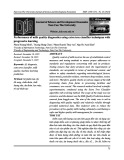

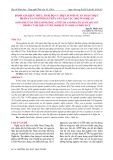
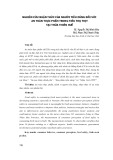
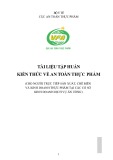

![Báo cáo thực hành An toàn thực phẩm [Năm/Khóa...]](https://cdn.tailieu.vn/images/document/thumbnail/2014/20141003/dragon02st/135x160/1716775_166.jpg)

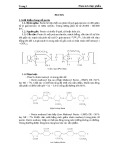
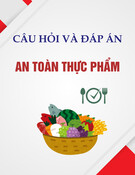

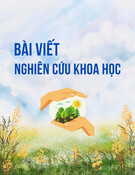
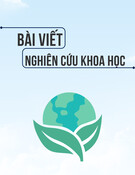


![Bài giảng Chế biến khoáng sản vô cơ [Mới nhất]](https://cdn.tailieu.vn/images/document/thumbnail/2025/20251025/thanhvan173002/135x160/21521761538638.jpg)
